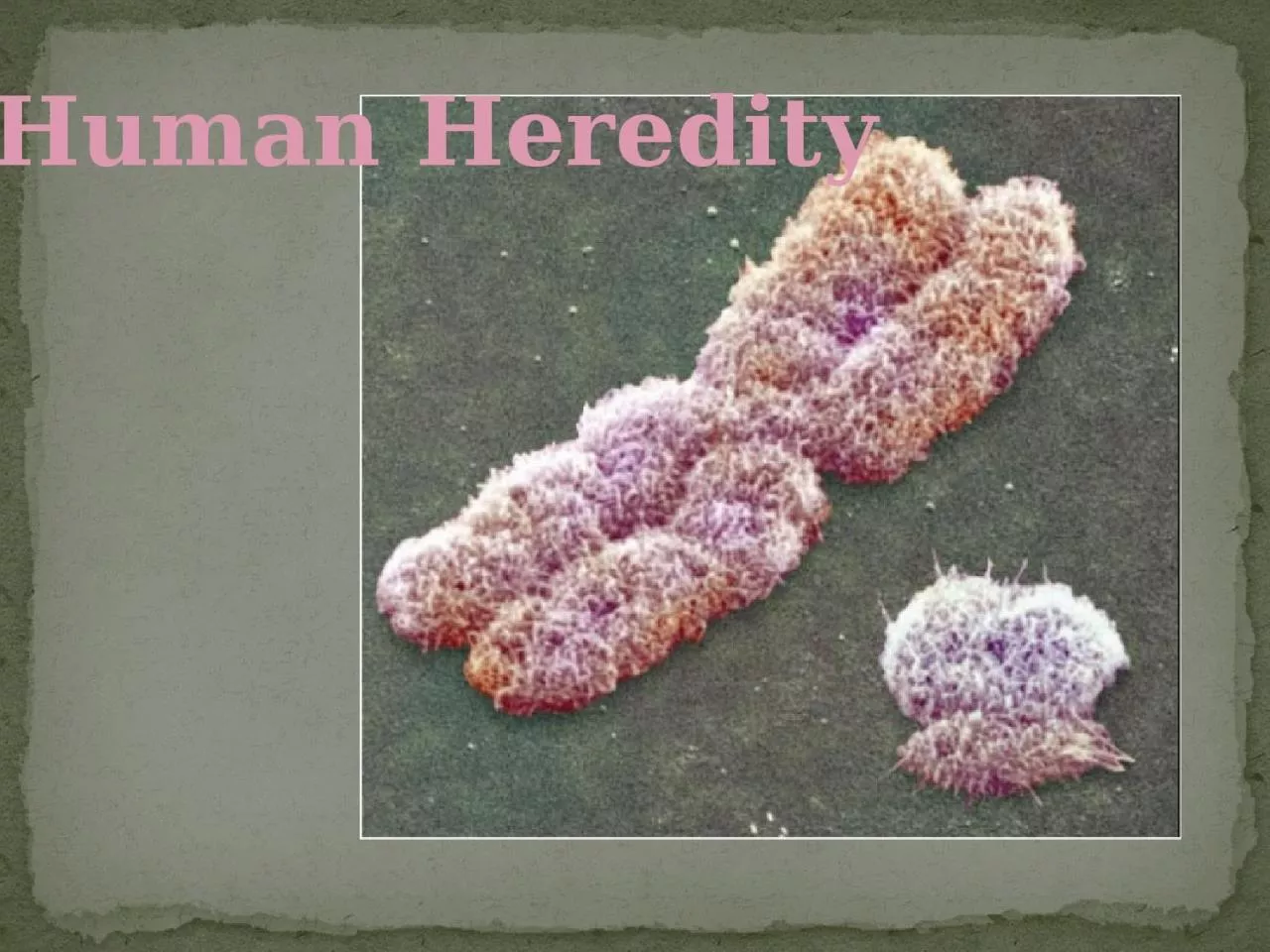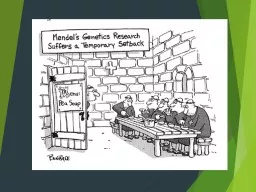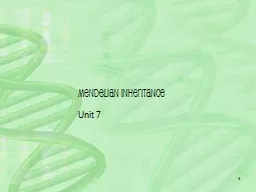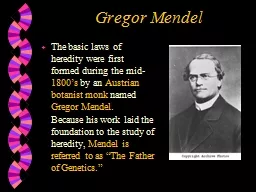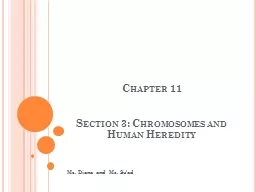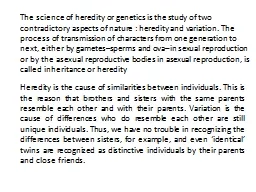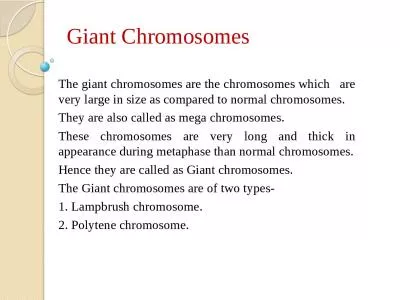PPT-Human Heredity Walter Sutton in 1902 proposed that chromosomes were the physical carriers
Author : roberts | Published Date : 2024-01-03
Problems arose however regarding the following question Why are the number of alleles which undergo independent assortment greater than the number of chromosomes
Presentation Embed Code
Download Presentation
Download Presentation The PPT/PDF document "Human Heredity Walter Sutton in 1902 pro..." is the property of its rightful owner. Permission is granted to download and print the materials on this website for personal, non-commercial use only, and to display it on your personal computer provided you do not modify the materials and that you retain all copyright notices contained in the materials. By downloading content from our website, you accept the terms of this agreement.
Human Heredity Walter Sutton in 1902 proposed that chromosomes were the physical carriers: Transcript
Download Rules Of Document
"Human Heredity Walter Sutton in 1902 proposed that chromosomes were the physical carriers"The content belongs to its owner. You may download and print it for personal use, without modification, and keep all copyright notices. By downloading, you agree to these terms.
Related Documents

